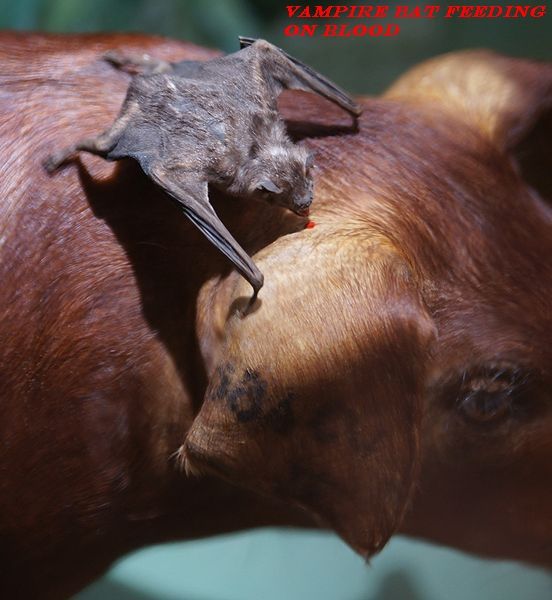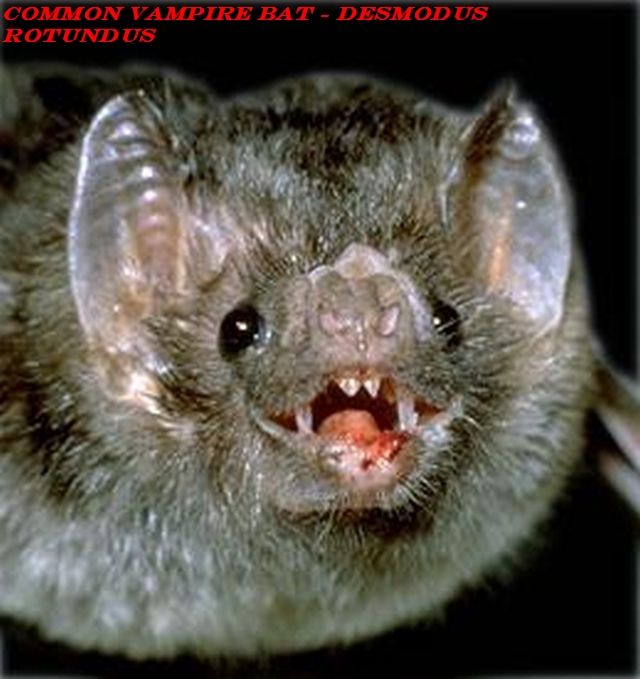The Blood Feeding Vampire Bats – The Sanguivorous Mammals!!
Only three species of those whopping twelve hundred species of the bats are what can be called the “Vampires or Vampire Bats”. The denomination “Vampire” itself provokes a feeling of terror in our subtle human minds; the credit for this ghastly feeling goes to the horror novels and Hollywood flicks. Bram Stoker, an Irish novelist, wrote a very famous novel “Dracula” in which he fantasized the terrifying character of Count Dracula as a blood sucking living being (Vampire). But, this is not the right place to discuss about such fictitious stories or horrifying Hollywood scripts, rather on this scientific platform, I am here to shed light on the scientific facts and not to discuss the fancies of the human mind.
The three species of bats, which are the only ones called as the vampire bats, are all found in Latin America. They do feed on blood of birds or mammals, but that is their natural feeding habit, and therefore, they can be aptly called as – the Sanguivorous Mammals. Sanguivorous are those organisms that feed on blood. The vampire bats are, thus, neither brutal creatures nor are they cold blooded, they are just like us – warm blooded mammals. The vampire bats feed mostly on the blood of horses, livestock, and wild mammals such as deer and peccaries (peccaries are pig like mammals occurring from the southwestern United States to central Argentina). It is rare that a vampire bat bites human beings.
For feeding on the blood of an animal (prey), the vampire bat lands near a glabrous (hairless) and thin area on the animal’s skin, for example, the shoulder or hoof of the animal. Then, cautiously and discreetly, the blood feeding bat moves to a specific spot on the skin, licks that area, and then makes a small, painless incision into the skin of its prey. Then, the vampire bat laps up the animal’s blood, just like kittens, instead of sucking it as is depicted in horror scripts. The saliva of a vampire bat has an extremely potent blood-clot dissolving enzyme (thrombolytic enzyme). This enzyme keeps the blood of the victim in a fluid state, so that the bat can easily get its nutritious feed. In medicine, this enzyme is used to treat certain clotting disorders of human beings.
Although for the victim (that animal whose blood has been fed upon by the vampire bat/bats), the loss of the quantity of the vital fluid (blood) is not enough to pose any sort of harm to its health, but there exists a risk of infectious diseases being passed through the blood feeding vampire bat to its victim. Through the blood feeding process, the victims might get exposed to parasitic organisms, secondary infections, and rabies. Rabies is a deadly viral disease of mammals, and is mostly transmitted through the bite of an animal carrying the rabies virus. The majority of the rabies cases reported each year in the United States occur in wild animals like skunks (skunks are mammals of the family Mephitidae, found in the Western Hemisphere, and uses their anal scent glands to release a fetid odor in defense), raccoons, bats, and foxes.
Books To Read –
Vampire Bats (Naturebooks: Mammals) – at Amazon.com/Books
Vampire Bats (The Library of Bats) – at Amazon.com/Books
Stokes Beginner’s Guide to Bats – at Amazon.com/Books
Bats of the United States and Canada – at Amazon.com/Books
Understanding Bats – at Amazon.com/Books


